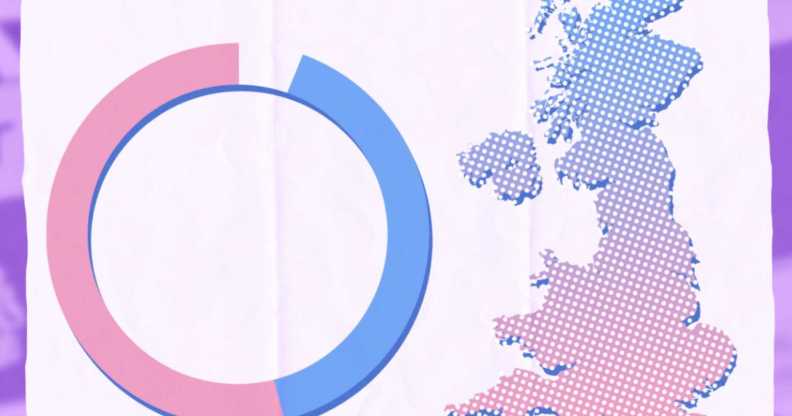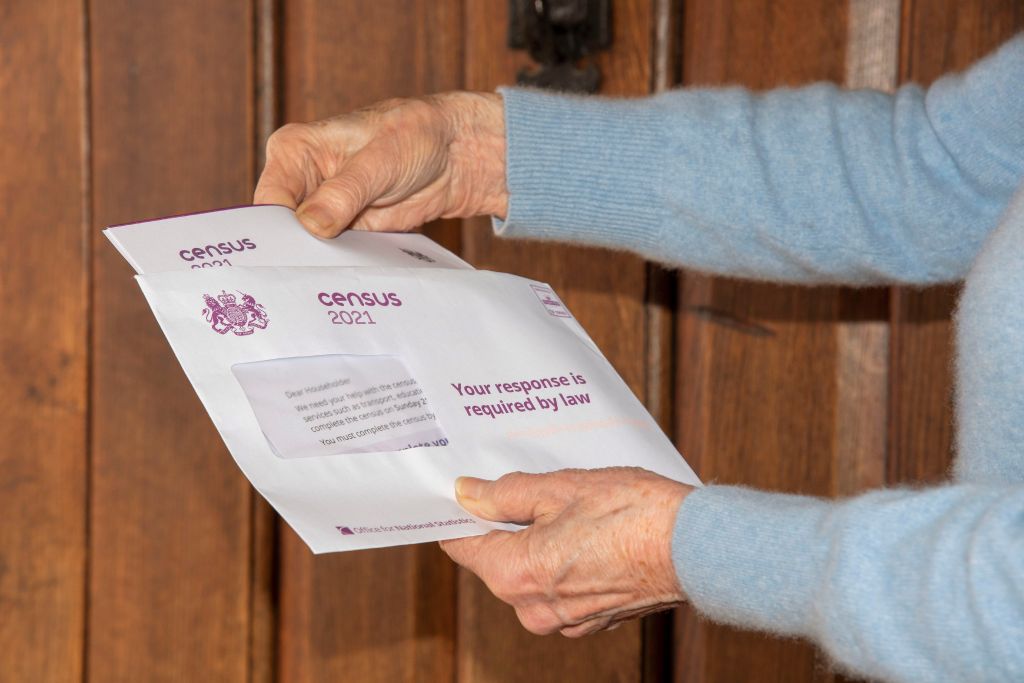ONS ‘confident’ in trans census figures after investigation into ‘overestimated’ numbers

The ONS says it is ‘confident’ in its figures, although some people may have misunderstood the gender identity question. (PinkNews/Getty)
Following an investigation, the Office for National Statistics (ONS) has said it is “confident” about its national figures for the trans population shown in the 2021 census, but admits some people with lower English skills may have not “interpreted the question as intended”.
In January, the ONS released first-of-their-kind statistics into the number of LGBTQ+ people in England and Wales, after voluntary questions on gender and sexuality were included in the 2021 census.
The numbers revealed that about 1.5 million people (3.2 per cent) identified as gay, lesbian, bisexual or another sexual orientation, while 262,000 (0.5 per cent) reported their gender identity was not the same as the sex they were assigned at birth.
Following the data’s release, questions were asked about the numbers when it was found that some areas with large ethnic minority groups – where many people speak English as a second language – had a higher transgender population than the researchers were expecting.
Advocacy groups, however, believed the figures could be an underreporting because the gender identity question was voluntary and people who are not out might have been fearful about filling in their gender identity on an official document.
On Wednesday (8 November), following an investigation into the trans figures and methodology, the ONS released a statistical bulletin stating that while some findings of the census “may be unexpected, this does not necessarily mean they are wrong”.
Jen Woolford, the ONS’s director of population statistics, said: “We have confidence in our gender identity estimates at a national level, however there are some patterns in the data that are consistent with – but do not conclusively demonstrate – some respondents not [having] interpreted the question as intended, for example, people with lower English language skills in some areas.
“Some local authorities may attract trans people due to established communities and unexpected patterns can result from correlations between variables, such as younger age profiles in some ethnic groups.”

In October, women and equalities minister Kemi Badenoch told the House of Commons she had ordered an investigation into whether the number of transgender people in England and Wales had been “overestimated” due to people not understanding the gender identity question.
“We need to be very careful about the language, people don’t often understand what we mean when we use terms like ‘transgender’ [and] ‘gender identity’, we’ve got to make sure they understand that,” she said.
This followed a publication of an interim review of statistics on gender identity by the Office for Statistical Regulation (OSR) earlier the same month.
The review’s authors had admitted “measuring gender identity is undoubtedly challenging” and the small size of the trans population “creates challenges for data collection”.
Woolford’s statement continued by saying the ONS had spoken to stakeholders who use the data, and these groups “recognise that there will be greater levels of uncertainty in our gender identity statistics”.
She went on to say: “We have also released additional information to help them interpret the data at a detailed level.
“We have made it clear that these should not be used to create alternative estimates of the trans population.”
It cannot be ignored that some trans people are “likely to be among those who chose not to respond to this voluntary question” and so it is not possible to “quantify any potential under or overestimate among these groups”, Woolford continued.
“Any expectations of how the transgender population varies over different population sub-groups were built on limited evidence, precisely the evidence gap that inclusion of this question on the census was intended to fill.
“We will continue to develop these statistics as part of our programme to develop population and migration statistics, informed by our recent public consultation.”
The ONS’ findings come days after figures relating to the number of pansexual people in England and Wales were updated.
A statistical release on Wednesday (1 November), revealed corrected numbers, and revealed that some responses to the sexual orientation question that should have been coded to “all other sexual orientations” were instead put down as “pansexual”.
The update resulted in the estimated figure for the number of pansexual people dropping from 112,400 to 48,000.
How did this story make you feel?

